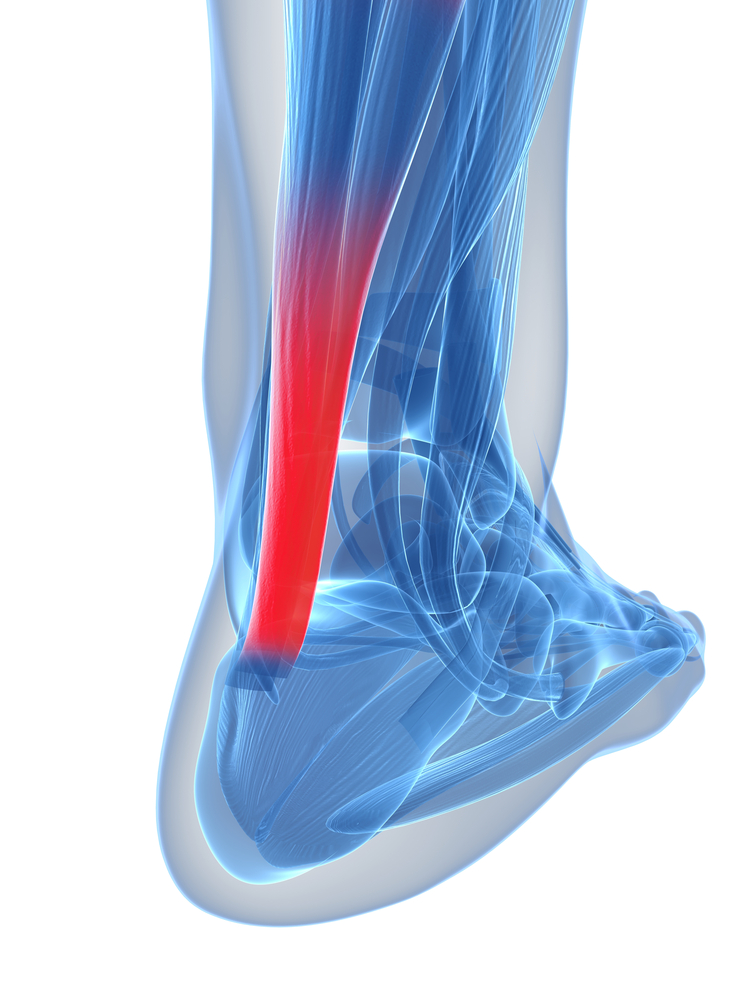
Achilles tendinopathy is an overuse injury and irritation of the tendon that attaches the calf muscles to the heel bone in the back of your lower leg. This can be a painful condition and can affect anyone in the general population. It does however occur more frequently in runners. It can typically begin as an ache in the back of the leg or above the heel following activity such as running or some sort of sporting activity. More severe pain can develop with longer durations of the same activities.
The Achilles tendon transmits the force from the calf muscles down to the foot when one pushes their foot off the ground, for example when walking, running, jumping, etc. It also helps to control the foot and ankle as it accepts weight and touches back down on the ground. Typically, problems begin to occur when the muscle is put through a load greater than it has the strength for. This can happen in a single instance, or it can happen over time as an overuse injury that results in repetitive breakdown of the tissue.
It would be helpful to understand and attempt to prevent the risk factors associated with Achilles tendinopathy, as a tendinitis can weaken the tendon, making it more vulnerable to a tear which sometimes requires surgical repair. Some of the risk factors include: calf muscle weakness, calf muscle tightness, abnormal foot structure and mechanics, improper footwear, obesity, a change in or quick increase in exercise routine or sport activity, your sex/age (most common in men and more common as you age), and certain types of antibiotics have been associated with higher rates of Achilles tendinitis.
What should be done to treat this pain?
It can be hard to know sometimes the best course of action. But physical therapy can help with Achilles tendinopathy! Your physical therapist can help diagnose the condition, determine the reasons why you are experiencing your pain, and write up a specific-to-you plan of care to treat the problem. A visit with a physical therapist could consist of manual therapy techniques, range of motion treatments, a corrective exercise program, pain management, education regarding the condition, muscle strengthening, and training to get you back to your prior level of function.
Pay close attention to some preventative measures you can take in attempt to avoid issues at your Achilles. It is important to maintain good mobility and muscular strength in your legs. Also be mindful of your activity level and if there are any drastic changes in either frequency, intensity, footwork, and/or exercise surface. Too drastic of changes in any or all of these factors could contribute to irritation at your Achilles tendon. And don’t forget to educate yourself. The more you know, the healthier you can stay!


